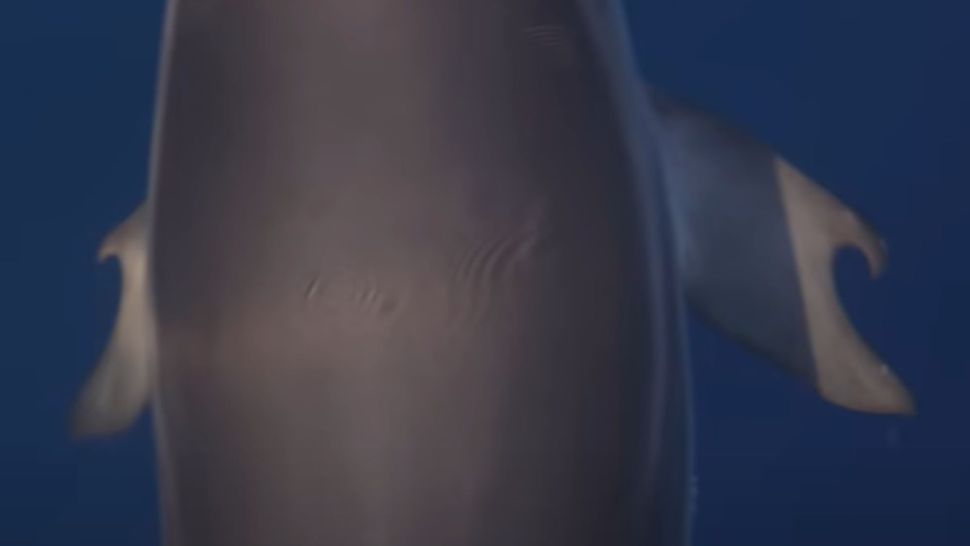[video] A dolphin with thumbs on flippers spotted near Greece
A unique dolphin with thumb-like deformities on its flippers has been documented during boat surveys off the Greek coast in July 2023.
Researchers from the Pelagos Cetacean Research Institute in Greece who observed the dolphin on two occasions last summer in the Gulf of Corinth, say the mammal was likely affected by a genetic defect during fetal development.
Photographs captured by Alexandros Frantzis, the scientific coordinator and president of the institute, showcase the dolphin's flippers with intriguing, hook-shaped "thumbs." Despite its distinct appearance, the dolphin maintained pace with its pod, engaging in typical behaviors such as swimming, leaping, bow-riding, and playing with other dolphins, according to an article published in the journal LiveScience.

Frantzis noted that in 30 years of surveys in the open sea and monitoring stranded dolphins along the Greek coasts, this was the first time such a flipper morphology had been observed. The Gulf of Corinth, where the dolphin was spotted, is home to a mixed-species society of dolphins, including common dolphins, Risso's dolphins, and striped dolphins.
The particular specimen with thumbed flippers was identified as a striped dolphin, and Frantzis suggested that the unique flipper morphology may be a result of rare and irregular genes expressing themselves due to constant interbreeding within the isolated population of around 1,300 striped dolphins within the gulf.
More to read:
[video] Sharing tools sheds light on learning and evolution. The case of chimpanzees
Lisa Noelle Cooper, an associate professor of mammalian anatomy and neurobiology, suggests that the genetic defect is likely rooted in altered genes affecting flipper development during the dolphin's time as a calf. Cetaceans, including dolphins, have distinct forelimbs with finger-like bones, forming a soft-tissue flipper that conceals their "thumbs."
While dolphins have thumbs, they are not as prominent as human thumbs and are typically concealed by their flippers. In this case, the photographed dolphin seems to be missing some fingers and associated tissue, possibly due to an unusual event during fetal development.
More to read:
Scientists learned how parasitic worms highjack their hosts
The thumb and fourth digit, however, remained, presenting a hook-shaped appearance, although it lacks mobility. Cooper emphasized that no cetaceans have mobile thumbs, highlighting the rarity and uniqueness of this particular dolphin's flipper deformity.
Although the dolphin’s thumbs may have appeared as a result of genetic error, such changes are generally considered the beginning of a new path in evolution, otherwise we’ve learned nothing from history. Interbreeding often supports this path.
See the video from Greek researchers.







![[video] Aerospace startup proposes sled launch system to push planes into space](/news_img/2024/11/15/news0_mediu.jpg)